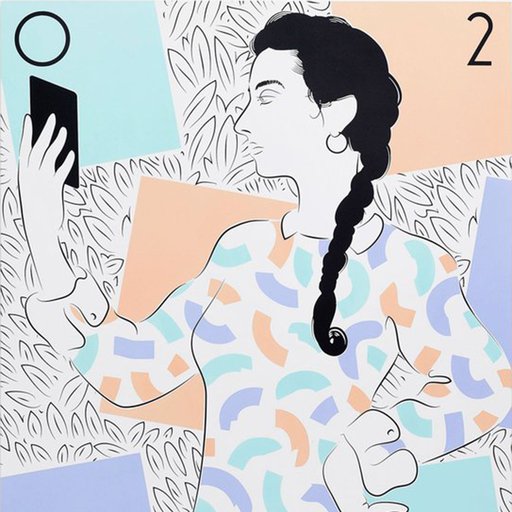Stuart Davis
American Modernist painter Stuart Davis was born in Philadelphia in 1892 and spent much of his life in New York. He is best known for developing a unique artistic vocabulary, which was influenced by jazz, consumer culture, and the sociopolitical environment in America. Davis' father was an art editor for the Philadelphia Press and his mother was a sculptor. In 1909, Davis left home to study at the Robert Henri School of Art in New York, where he was encouraged to develop a spontaneous practice. This spurred his interest in music and visual rhythms. From 1912 to 1916, Davis worked as an illustrator for several magazines, while experimenting with cubist abstraction. During this period, he flattened and abstracted urban scenes and developed his signature use of bright colors. In 1913, Davis’ work was included in the Armory Show, which led to several museum exhibitions. Later in life, he created paintings, which referenced and appropriated earlier works. Davis is now widely recognized for his ability to translate the disorder of everyday life into spontaneous compositions.
Stuart Davis’ work has been included in group and solo shows, including the Whitney Museum of American Art, New York, MoMA, New York, Cincinnati Art Museum, Ohio, …
American Modernist painter Stuart Davis was born in Philadelphia in 1892 and spent much of his life in New York. He is best known for developing a unique artistic vocabulary, which was influenced by jazz, consumer culture, and the sociopolitical environment in America. Davis' father was an art editor for the Philadelphia Press and his mother was a sculptor. In 1909, Davis left home to study at the Robert Henri School of Art in New York, where he was encouraged to develop a spontaneous practice. This spurred his interest in music and visual rhythms. From 1912 to 1916, Davis worked as an illustrator for several magazines, while experimenting with cubist abstraction. During this period, he flattened and abstracted urban scenes and developed his signature use of bright colors. In 1913, Davis’ work was included in the Armory Show, which led to several museum exhibitions. Later in life, he created paintings, which referenced and appropriated earlier works. Davis is now widely recognized for his ability to translate the disorder of everyday life into spontaneous compositions.
Stuart Davis’ work has been included in group and solo shows, including the Whitney Museum of American Art, New York, MoMA, New York, Cincinnati Art Museum, Ohio, Boston Institute, Art Institute of Chicago, Walker Art Center, Minneapolis, SFMOMA,The Brooklyn Museum, Metropolitan Museum of Art, New York, and the 1952 Venice Biennale. He received numerous fellowships and awards, including the Carnegie Institute Prize and a Guggenheim Fellowship.
Amon Carter Museum, Fort Worth, TX
Art Gallery of the University of Rochester, NY
Art Institute of Chicago, IL
Block Museum of Art at Northwestern University, Evanston, IL
Brooklyn Museum of Art, NY
Carnegie Museum of Art, Pittsburgh, PA
Cleveland Museum of Art, OH
Corcoran Gallery of Art, Washington D.C.
Dayton Art Institute, OH
Fine Arts Museums of San Francisco, CA
Hirshhorn Museum and Sculpture Garden, Washington D.C.
Hyde Collection Art Museum, Glens Falls, NY
Johnson Museum of Art at Cornell University, Ithaca, NY
Kemper Museum of Contemporary Art, Kansas City, MI
Metropolitan Museum of Art, New York, NY
Montclair Art Museum, NJ
Museum of Fine Arts, Houston, TX
Museum of Modern Art, New York, NY
National Portrait Gallery, Washington D.C.
Nevada Museum of Art, Reno, NV
Norton Museum of Art, West Palm Beach, FL
Oklahoma City Art Museum, OK
Orange County Museum of Art, CA
Pennsylvania Academy of the Fine Arts, Philadelphia, PA
Phillips Collection, Washington D.C.
Portland Museum of Art, ME
San Diego Museum of Art, CA
Smithsonian American Art Museum, Washington D.C.
Springfield Museum of Art, OH
U.S. Library of Congress, Washington D.C.
University of Kentucky Art Museum, Lexington, KY
Virginia Museum of Fine Arts, Richmond, VI
Walker Art Center, Minneapolis, MN
Whitney Museum of American Art, New York, NY
Susan Sheehan Gallery, New York, NY







